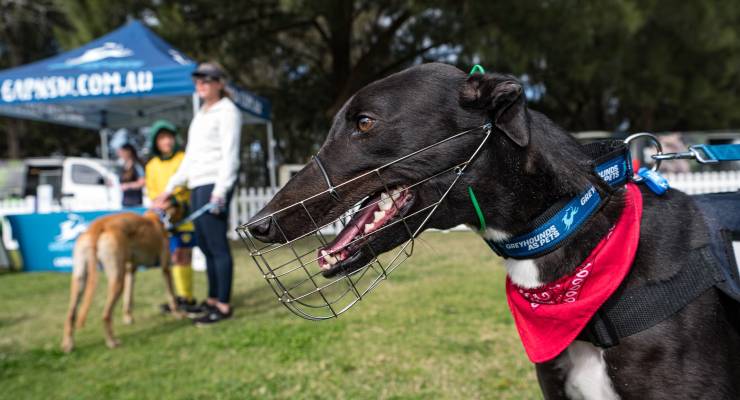
One of the greyhound racing industry’s most expensive efforts at legitimisation, rehoming programs for ex-racing dogs, is being overwhelmed as the industry ramps up overbreeding, leaving volunteer non-industry rehoming services to shoulder the burden of dealing with the industry’s “wastage”.
A new report from the Coalition for Protection of Greyhounds collates data from state greyhound racing bodies to form a national picture of rehoming practices — which the industry dramatically ramped up after the exposure of systemic cruelty by Four Corners, and detailed independent reports of industrial-scale animal abuse within the sector.
Industry rehoming programs — usually called “GAPs”, either Greyhound Adoption Programs or Greyhounds As Pets — are run by volunteers (who are enthusiastic and hard-working) and operate as non-profits, but receive millions of dollars from the industry. The NSW program cost more than $6 million in 2021-22 and the Victorian program nearly $4.6 million. That translated into 301 dogs being rehomed in NSW, at a cost of $21,200 a dog. In Victoria just under 1,100 dogs were rehomed, at a cost of just over $4,000 each. In both states, these industry-funded programs have rehomed fewer dogs than volunteer-run community programs, which receive no funding and operate on a stricter basis of only rehoming to owners capable of meeting safety and welfare criteria.
The same difference applies in Tasmania, while in Queensland, GAP programs and community rehoming accounted for about the same number of dogs. Only in South Australia and Western Australia did a GAP outperform community rehoming — if it can be believed that in South Australia 489 dogs were rehomed through GAP programs, when NSW could barely manage 300. Western Australia has the strongest rehoming requirements and provides for recovery, rather than euthanasia, for dogs that break limbs while racing, and its GAP significantly outperforms community efforts. WA stands in dire contrast to Queensland, which has no rehoming requirement of any kind.
While around 6,800 dogs were rehomed nationally in 2021-22 — including GAP, community and direct breeder rehoming — there’s a growing disparity between rehoming and the number of dogs being bred by the industry. While not yet back to the numbers of dogs being bred before the abuses of the industry were exposed (which may have totalled over 17,000 dogs a year) breeding is now back to nearly 10,000 a year according to industry registrations, not including dogs that are bred but never registered for racing, which regulators suggest could be more than 2,000 a year.
Overbreeding, or “wastage” as the industry prefers to call it, is placing significant pressure on rehoming services. The Victorian GAP is claimed by community organisations to tell breeders to take their “wastage” to a well-known community rehoming service, which operates with none of the multi-million dollar resources available to industry-funded GAPs. Without a significant lift in rehoming efforts, the coming surge of over 10,000 dogs in the industry per year will never find a life after racing. Meanwhile governments continue to prop the industry up with taxpayer handouts and light-touch regulation.
Does anyone have the guts to fix greyhound racing? Readers, we want to hear from you — especially while our comments are closed due to our website upgrade. Send us your thoughts on this article to letters@crikey.com.au. Please include your full name to be considered for publication. We reserve the right to edit for length and clarity.








Crikey is committed to hosting lively discussions. Help us keep the conversation useful, interesting and welcoming. We aim to publish comments quickly in the interest of promoting robust conversation, but we’re a small team and we deploy filters to protect against legal risk. Occasionally your comment may be held up while we review, but we’re working as fast as we can to keep the conversation rolling.
The Crikey comment section is members-only content. Please subscribe to leave a comment.
The Crikey comment section is members-only content. Please login to leave a comment.